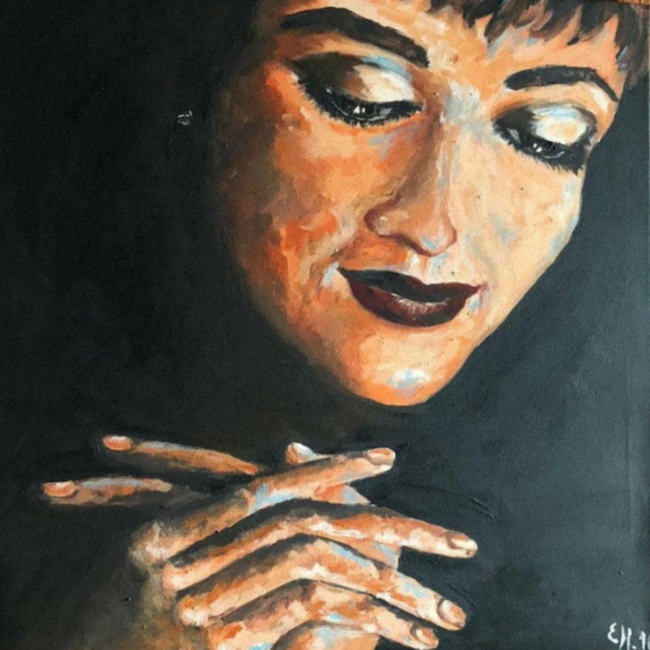What distinguishes in the most incisive way the sensibility of many artists is that innate ability to go beyond the whole, beyond the wider image, to let themselves be captured and kidnapped by a detail that can become the fulcrum of an artwork, a narrative trace of a fragment of a moment that without the intuitive eye of the author of the canvas, would slip away in the noise of existence. Today’s protagonist focuses on detail, on what is normally unnoticed, to make it the main feature of her works.
Emma Haase, Hungarian by origin but resident in Innsbruck for many decades, through her strong sensitivity is able to dwell on an instant that she needs to amplify to tell, through images, the sensations she received when her gaze had lingered on a subject, capturing a fraction of a moment that otherwise, or at a quicker and less attentive glance, would disappear without trace. Her style draws, from work to work, at times more from Realism, at others more from Expressionism, at others it becomes a synthesis of both the pictorial movements that marked the end of the nineteenth century and opened the way to the other currents that distinguished the following century.
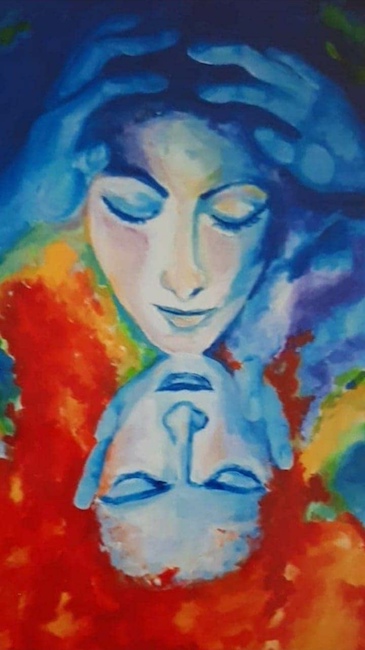
While Realism wanted to remain linked to more classical art, to all the academic rules necessary to tell the subjects and landscapes in a faithful way in details and particulars, preferring the perfection of the external form at the expense of a substance, an emotion that was not functional to the work, on the other hand Expressionism had as its main objective to emphasize the inner feeling, the deep motion of the artist using unnatural colors, unreal figures and marked contours, which would deviate as much as possible from an aesthetic ideal that would mortify the emotion, the passion as pathos, necessary instead to make the artwork live and palpitate. Adherence to reality and objective harmony versus absolute domination of emotions even at the risk of transforming images into something dark and aggressive if the perceived sensations were linked to tumultuous sensations, two apparently irreconcilable worlds, at least when these two currents were born and established in a particular historical context in which it was necessary to define and maintain clear boundaries between one movement and the other. In the course of the twenty-first century, on the other hand, there was a countertrend, a need for artists to break the banks and put into dialogue and synergy different languages in order to create new and inedited, following intuition and choosing the freedom to find one’s own personal identity in an era in which individualism, in its positive sense of the tendency to express one’s self, prevailed over the previous need to belong to a group. In Emma Haase’s canvases this agreement appears evident but also functional to support an emotional tendency that induces the artist to amplify the sensation perceived but also interpreted by reading the expression of the subjects immortalized, and later enriched by a detail outside the subject itself that can be captured only from a different point of view from that of the protagonist. Here, then, the revealed interiority merges with the sensitivity of the Haase, giving life to a wider, more harmonic melody that is at the same time both real and interior that is imprinted on the canvas.
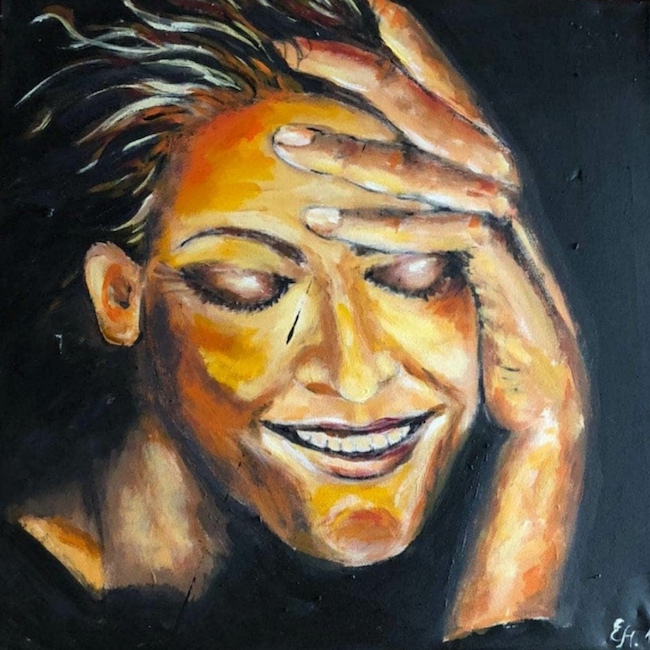
The artwork Lacheln (Smile) features a fleeting moment of the woman represented, an instant in which her thought probably flew towards a serene, amusing memory, which distracts her from the reality of the present to lead her to that trice still able to make her smile, a little embarrassed and a little amused.
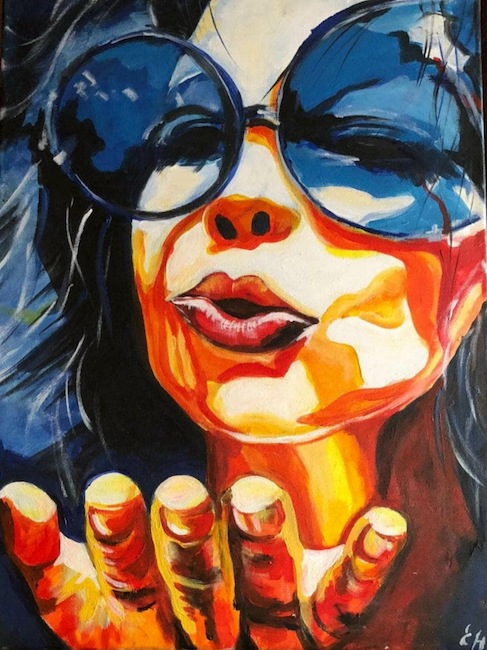
Sonnenschein (Sunlight), instead, is a beautiful synthesis between Emma Haase’s descriptive Realism, evident in the attention to particular of the girl’s face, the details of her sunglasses and hair, and the Expressionism that is revealed in the colours used for the play of light and shadow, but also in the sensation received by the artist observing the reflection of the sun, as well as the woman’s sunshine, which come out of the canvas to envelop the observer with all their intensity and warmth.
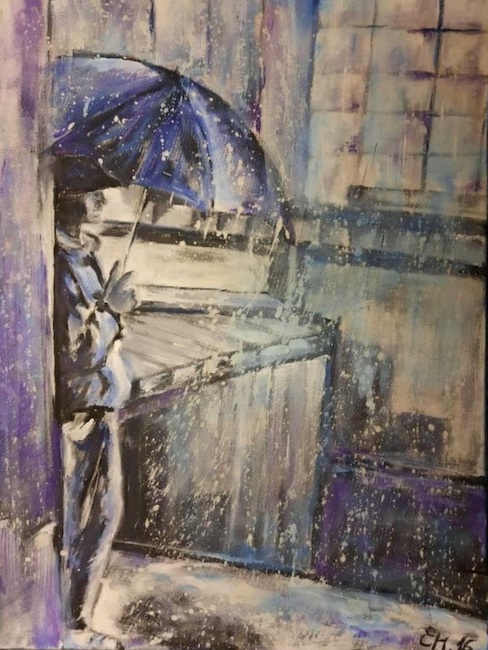
In Regen (Rain) canvas, Haase‘s attention is focused not so much on the man with the umbrella who is placed on one side of the scene, as if he himself were captivated by the incessant beating of the water, but on the wet surfaces, and on the sense of melancholy that natural phenomenon infuses, as if the charm of that washing away all that is not necessary was the turning point between what of the past must be held back and what can be let go.
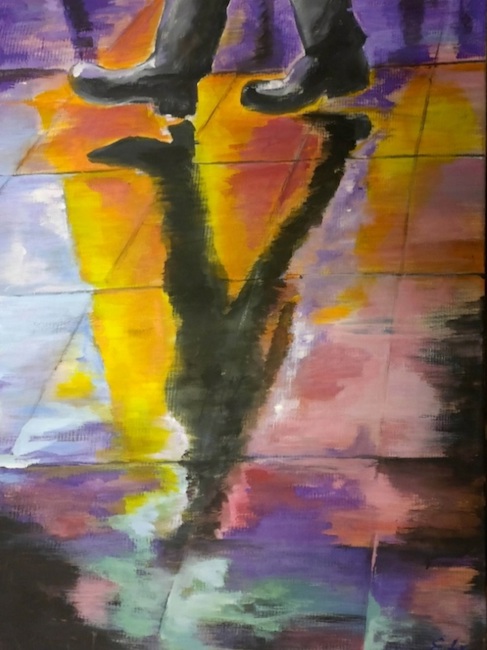
And again in Schatten (Shadow) the artist focuses on reflection, that contemporary tendency to look through a filter, be it the shadow projected onto a shiny surface or the screen of a mobile phone or computer, which makes modern man incapable of looking straight into the eyes, of coming into deep and intense contact with the other, thus missing the opportunity to grasp its essence, preferring a virtual identity, or screen in which it is not necessary to open and bare oneself.
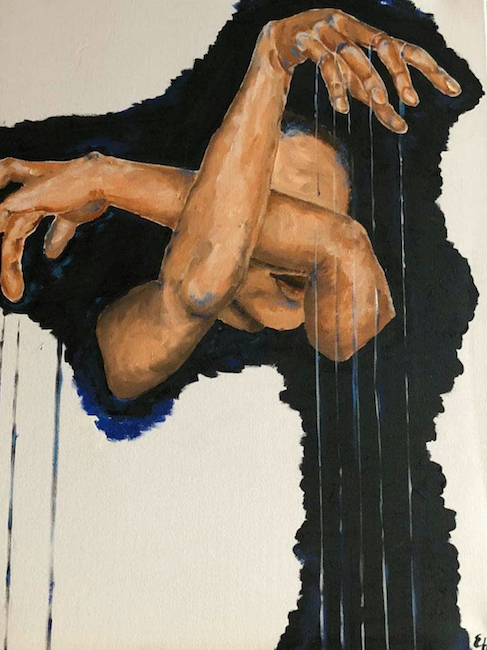
Marionette is the synthesis of this thought of Emma Haase, a present in which man often feels like a protagonist but in reality he is only guided by superior threads, universal wills by virtue of which it is necessary to conform to what modern society imposes, penalty the isolation from a global community that travels on fast and common tracks, while deceiving the individual that he’s making a voluntary choice. It is only through looking back to the past, the artist seems to suggest, that one can return to freer thinking, without conditioning other than those of one’s own personal feeling, it is perhaps from this suggestion that is born the artwork homage to Auguste Rodin, Nachdenken nach Rodin (Rodin’s Thinker).
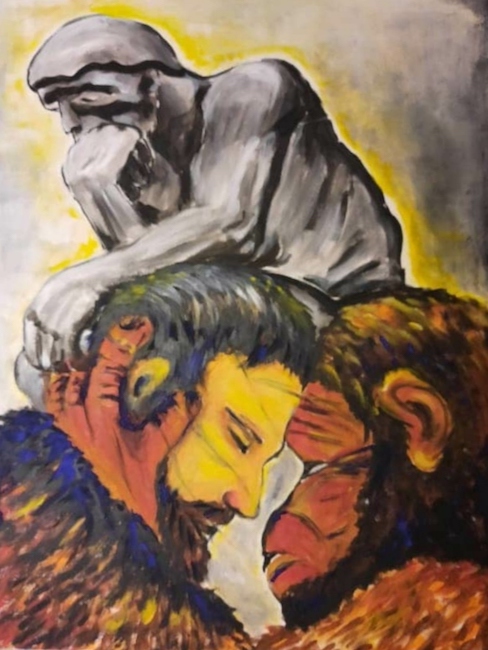
Emma Haase has attended many courses in painting perfecting her painting style and has had many group exhibitions to her credit, especially in Austria, Germany and Hungary.
EMMA HAASE-CONTATTI
Email: emma.haase.1950@gmail.com
Facebook: https://www.facebook.com/emma.haase.777


